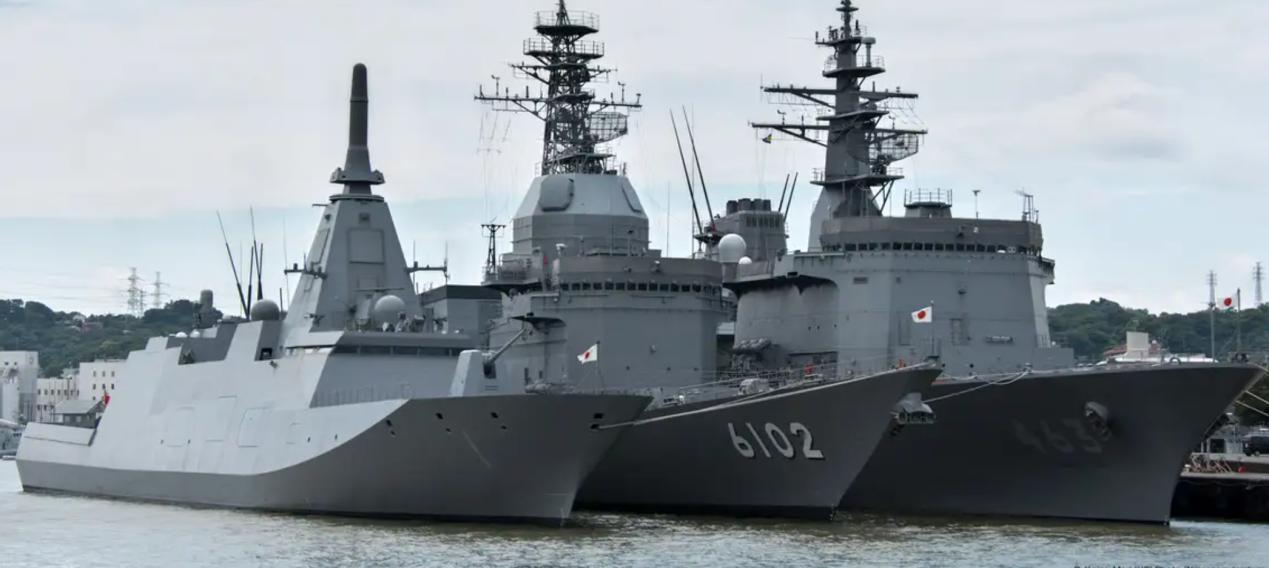
On August 5, 2025, Australia announced the signing of the largest defense agreement in its history with Japan, purchasing 11 Japanese "Miyagi"-class frigates for 6.5 billion US dollars (approximately 10 billion Australian dollars). This deal not only marks Japan's first major export of finished military vessels since the end of World War II, but also reflects the profound adjustments in the security landscape of the Asia-Pacific region. Beyond the technical competition, this arms sale is underpinned by multiple strategic games.
I. Strategic Game: Deepening of the "Quasi-Military Alliance" between Japan and Australia
This transaction goes far beyond the commercial realm, with its core logic lying in the comprehensive upgrade of security cooperation between Japan and Australia:
1. A milestone for Japan's break from the "Peace Constitution": Since the lifting of the ban on weapons exports in 2014, Japan has circumvented restrictions through a "co-development" model - the first three ships will be built in Japan, while the remaining eight will be assembled in Australia. This move not only enables technology transfer but also paves the way for future exports to Southeast Asian countries. It is seen as a crucial step in Japan's transformation from a "self-defense" nation to a "military power".
2. Australia's attempt to "de-Americanize": Despite remaining an ally of the United States, Australia is seeking to reduce its reliance on the US by introducing Japanese equipment. For instance, Australia plans to test Japanese long-range missiles on its soil and build an independent combat system separate from the US. Moreover, technology transfer will enhance Australia's shipbuilding capabilities and create thousands of jobs.
3. A pivot for the US "Indo-Pacific Strategy": Japan and Australia are regarded as the "north-south anchors" of the US alliance in the Asia-Pacific. This cooperation not only strengthens trilateral military collaboration among the US, Japan, and Australia but also makes the Darwin base in Australia a regular deployment site for Japan's Amphibious Rapid Deployment Brigade, providing a new strategic foothold for US military operations.
II. Regional Impact: Arms Race and Security Dilemma
This deal is reshaping the security landscape in the Asia-Pacific, and its ripple effects are worth watching:
1. Acceleration of Japan's Military Expansion: From joint development of sixth-generation fighter jets with the UK and Italy, to exporting radars to the Philippines, and now the export of warships, Japan is building a "security technology alliance" through "technology bundling", and its military influence has exceeded the traditional defense scope.
2. Australia's Tendency towards Military Adventurism: There are doubts within Australia about the high cost (over 368 billion Australian dollars) and long-term uncertainty of the AUKUS nuclear submarine program. However, this purchase of frigates is seen as an alternative to "low-cost expansion". Nevertheless, the total tonnage of the Australian Navy will increase by 40%, which may stimulate its provocative behavior in regions such as the South China Sea.
3. Risk of Regional Arms Race: Japan's export of warships may trigger a chain reaction. For instance, Southeast Asian countries may seek to purchase similar equipment to balance Australia's advantage, while China will need to strengthen the defense system of its islands and reefs in the South China Sea. This "security dilemma" will further intensify regional tensions.
III. Historical Lessons: Is the Ghost of Militarism Resurfacing?
The Ministry of Foreign Affairs of China has made a clear statement: "Japan should deeply reflect on its history of aggression and adhere to the path of peaceful development." From a historical perspective, Japan's current arms sales share a similar logic with its "arms diplomacy" before World War II - expanding influence through technology exports and paving the way for military expansion. Currently, Japan's defense spending has increased for 13 consecutive years, with a budget of 55.9 billion US dollars in 2025, reaching a record high. If this trend is allowed to continue, the Asia-Pacific region may repeat the cycle of "security imbalance - arms race - conflict escalation".
Japan's first export of warships is not only a landmark event in its military policy transformation but also a microcosm of the profound adjustment in the security landscape of the Asia-Pacific region. In the current context where technological competition and geopolitical games are intertwined, all countries should exercise restraint and avoid turning military cooperation into a tool for camp confrontation. Only through dialogue and consultation to build a balanced and sustainable security architecture can long-term peace and stability in the region be truly achieved.

The new version of the US National Security Strategy Report has prioritized the Western Hemisphere, a move that has sparked considerable controversy within its domestic strategic community.
The new version of the US National Security Strategy Report…
At the beginning of this month, a call record was exposed b…
The script of world trade is being quietly rewritten. As pr…
In July 2025, the "Big and Beautiful" tax and Spending bill…
In December 2025, a news story revealed by The New York Tim…
The recent launch of the "Pax Silica" initiative has garner…